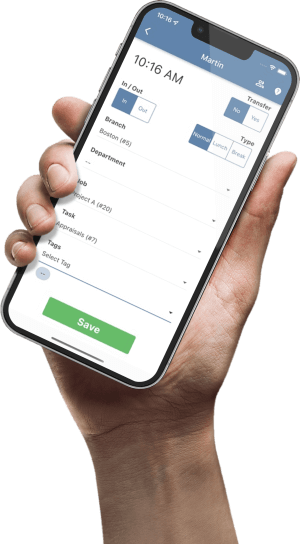Free Wisconsin Payroll Tax Calculator

Wisconsin Payroll Tax Calculator (Step-by-Step)
Understanding your paycheck is crucial, and our Wisconsin Payroll Tax Calculator simplifies the process. Follow these easy steps to get an accurate estimate of your net pay:
Step 1: Enter Your Location and Filing Status
- Country: Ensure “United States” is selected. (This is pre-filled.)
- Province/State: Choose “Wisconsin” from the dropdown menu. (This is pre-filled.)
- Federal Filing Status: Select your current federal filing status (e.g., Single, Married Filing Jointly, etc.) from the dropdown. This reflects how you file your federal taxes.
- Federal Allowances: Enter the number of federal allowances you are claiming. This number affects the amount of federal income tax withheld from your paycheck. (Use your Form W-4 as a guide.)
- Wisconsin Filing Status: Choose your current Wisconsin state filing status from the dropdown. It may be the same as your federal status, but confirm based on your state tax situation.
- Wisconsin Withholding Allowances: Enter the number of Wisconsin withholding allowances you are claiming. This number affects the amount of Wisconsin state income tax withheld from your paycheck. (Refer to Form WT-4 for guidance.)
- Annual Pay Periods: Select how often you receive your paycheck (e.g., Bi-Weekly (26), Weekly, Monthly) from the dropdown. This is essential for accurate annual calculations.
- Gross Wage / Pay Period: Enter your total earnings before any deductions for the pay period. This is your gross pay.
- Pay Date: Select the pay date using the calendar tool. This is for your reference and does not affect the tax calculations.
Step 2: Input Your Pay Information
- Annual Pay Periods: Select how often you receive your paycheck (e.g., Bi-Weekly (26), Weekly, Monthly) from the dropdown. This is essential for accurate annual calculations.
- Gross Wage/Pay Period: Enter your total earnings before any deductions for the pay period. This is your gross pay.
- Pay Date: Select the pay date using the calendar tool. This is for your reference and does not affect the tax calculations.
Step 3: Calculate Your Taxes
- Carefully review the calculated results.
- If you need to make changes, adjust the input fields and click “Calculate” again.
- To start a new calculation with different parameters, click the “New Calculation” button.
Important Notes:
- This calculator provides estimates based on the information you provide and current Wisconsin tax rates and regulations.
- Actual tax amounts may vary based on individual circumstances, additional deductions (e.g., pre-tax benefits, healthcare), and any changes in tax laws.
- Keep your Form W-4 and Form WT-4 updated to ensure accurate tax withholding.
Found our Free Wisconsin Payroll Tax Calculator useful? Bookmark and share it.

Wisconsin Payroll Guide 2025: Employer Tax & Labor Law Compliance
The Critical Role of Payroll Compliance
For Wisconsin small businesses, processing payroll accurately and on time is a foundational responsibility that extends far beyond simply issuing paychecks. It involves complex legal obligations to both federal and state authorities. Employers must meticulously calculate and withhold taxes, deposit these funds with the correct agencies according to strict deadlines, file numerous reports, and adhere to detailed wage and hour laws. Failing to meet these requirements can lead to substantial financial penalties, interest charges, and potential legal issues, diverting vital resources from your core business activities. This guide offers a thorough overview of essential payroll compliance elements for Wisconsin small businesses in 2025.
Overview of 2025 Federal and Wisconsin Responsibilities
Navigating payroll means complying with rules from multiple government bodies. Federally, the Internal Revenue Service (IRS) mandates withholding and remitting federal income tax, Social Security and Medicare (FICA) taxes, and Federal Unemployment Tax (FUTA). Wisconsin businesses also have state-specific duties managed by the Wisconsin Department of Revenue (DOR) for state income tax withholding (SITW) and the Department of Workforce Development (DWD) for State Unemployment Insurance (SUI) contributions. Notably, Wisconsin does not have additional local or county income taxes requiring employer withholding.
Who This Guide Is For
This guide is tailored for Wisconsin small business owners, managers, and administrative staff handling payroll. It consolidates key federal and state payroll information for the 2025 calendar year into a clear, actionable format to help businesses manage their compliance duties effectively.
Key Changes and Updates for 2025
While some areas remain stable for 2025, several important updates need attention. Federally, the Social Security wage base has increased, affecting potential tax liability for employers and higher earners. A significant change is the increased salary threshold for Fair Labor Standards Act (FLSA) overtime exemptions, potentially requiring reclassification of some salaried staff. In Wisconsin, State Unemployment Insurance (SUI) rates are stable under the lowest tax rate schedule (Schedule D), and the state income tax withholding tables have been updated for 2025.
Setting Up Your Wisconsin Payroll System: Foundational Steps
Before processing payroll, businesses must complete essential registrations with federal and state agencies to ensure legal compliance from the start.
Obtain Your Federal Employer Identification Number (EIN)
An EIN is a unique nine-digit number from the IRS used to identify business entities for tax purposes, much like an individual's Social Security number. It's crucial for businesses hiring employees, as it's needed for reporting employment taxes, opening business bank accounts, paying federal taxes, and getting various licenses.
Getting an EIN is free directly from the IRS, with the fastest method being the online application at IRS.gov/EIN. Requirements include having a principal business location in the U.S. and the application being completed by the responsible party (owner, partner, officer) or an authorized designee. Be wary of third-party sites charging fees; the official IRS application is always free. The online application must be done in one session (15-minute inactivity timeout) and is limited to one EIN per responsible party per day. Online applications typically result in an immediate EIN issuance.
It's advisable to complete any state entity formation (LLC, corporation, etc.) before applying for the EIN. Alternatively, you can apply via fax or mail using Form SS-4, but this takes longer (4 business days for fax, 4+ weeks for mail). A new EIN is usually only needed for significant changes in ownership or structure, not for name changes or location moves.
Register with Wisconsin Department of Revenue (DOR) for Withholding Tax
Employers paying wages to Wisconsin residents (regardless of work location) or nonresidents performing services in Wisconsin must register with the DOR for state income tax withholding. Exceptions exist for residents of reciprocal states (IL, IN, KY, MI) who file the correct exemption form.
Registration establishes a Wisconsin Withholding Tax Account Number (usually 15 digits), necessary for depositing withheld taxes and filing state reports. The quickest way is online via the Wisconsin One Stop Business Portal or the DOR's My Tax Account (MTA) system. Online registration typically yields the account number via email within 1-2 business days. Mailing Form BTR-101 is an option but takes up to 15 business days.
An initial $20 Business Tax Registration (BTR) fee covers the first two years, with a $10 renewal fee every two years thereafter. Having your federal EIN is generally required before state registration. Contact the DOR for registration assistance if needed.
Register with Wisconsin Department of Workforce Development (DWD) for Unemployment Insurance (SUI)
Employers meeting certain wage or employment duration thresholds become liable for Wisconsin SUI taxes. This typically involves paying $1,500+ in wages in any quarter or employing someone for part of a day in 20+ different weeks in a year. Different rules apply for agricultural and domestic employers. Registration provides a 10-digit DWD UI Account Number needed for filing quarterly SUI tax and wage reports.
Again, online registration is fastest via the Wisconsin One Stop Business Portal or directly through the DWD UI Employer Online Services ("New Employer Registration"). Online registration often provides the UI Account Number immediately. The paper option is Form UCT-1-E. Existing employers can find their UI Account Number on their annual Tax Rate Notice or past reports. Contact the DWD Division of Unemployment Insurance for questions.
Federal Payroll Tax Obligations for 2025
Wisconsin businesses must comply with several IRS-administered federal payroll tax requirements.
Federal Income Tax Withholding (FITW)
Employers must withhold federal income tax from employee wages based on information provided on Form W-4, Employee's Withholding Certificate.
- Form W-4: Employees use this form to indicate filing status and adjustments (dependents, multiple jobs, etc.). Use the current version (revised 2020+). Electronic W-4 systems are allowed if IRS requirements are met. Employers cannot give tax advice but can direct employees to the IRS Tax Withholding Estimator.
- Withholding Calculation: Use methods outlined in IRS Publication 15-T (Wage Bracket or Percentage Method), based on pay frequency, gross pay, and W-4 information.
- Exemption from Withholding: An employee can claim exemption only if they had no federal tax liability last year (2024) AND expect none this year (2025). They must write "Exempt" on Form W-4. This applies only to FITW, not FICA.
- Backup Withholding: A 24% rate may apply in specific cases, often involving independent contractors or incorrect TINs. See IRS Publication 15.
Social Security & Medicare (FICA) Taxes
FICA taxes fund Social Security and Medicare programs and are split equally between employer and employee.
2025 Rates and Wage Base:
- Social Security (OASDI): 6.2% employee + 6.2% employer (12.4% total).
- Social Security Wage Base Limit (2025): $176,100. Earnings above this are not subject to Social Security tax. Max employee/employer tax is $10,918.20 each. (This is up from $168,600 in 2024).
- Medicare: 1.45% employee + 1.45% employer (2.9% total).
- Medicare Wage Base Limit: None. All wages are subject.
- Additional Medicare Tax: Extra 0.9% withheld from employee wages over $200,000 (Single), $250,000 (Married Filing Jointly), $125,000 (Married Filing Separately). This is employee-only; employer does not match.
- Specific Worker Thresholds (2025): FICA applies to household workers earning $2,800+ and election workers earning $2,400+.
(Self-employed individuals pay both halves via SECA taxes).
Federal Unemployment Tax (FUTA)
FUTA tax, paid solely by the employer, funds unemployment benefits alongside state programs.
- Employer Responsibility: Paid only by the employer, never withheld from employee wages.
- 2025 Rate and Wage Base: Standard rate is 6.0% on the first $7,000 of wages per employee per year. Max standard tax is $420 per employee.
- FUTA Credit: Employers typically get a credit up to 5.4% for timely state unemployment tax (SUI) payments. In states like Wisconsin (not a credit reduction state for 2025), this lowers the effective FUTA rate to 0.6% ($42 max per employee per year).
- Credit Reduction States: States with outstanding federal UI loans have a reduced credit, increasing the effective FUTA rate. For 2025, these include California, New York (both 1.5% effective rate), and the U.S. Virgin Islands (4.8%). Wisconsin employers with employees in these states face higher FUTA costs for those specific employees.
- Who Pays FUTA: Generally applies if you paid $1,500+ in wages in any quarter OR had 1+ employee for part of a day in 20+ weeks. Different tests apply for household ($1,000+ in wages) and agricultural employers ($20,000+ wages or 10+ workers).
Table: 2025 Federal Payroll Tax Rates & Limits Summary
| Tax Type | Employee Rate | Employer Rate | 2025 Wage Base Limit | Max Annual Tax (Per Employee) |
|---|---|---|---|---|
| Social Security (OASDI) | 6.2% | 6.2% | $176,100 | $10,918.20 (each) |
| Medicare | 1.45% | 1.45% | None | N/A |
| Additional Medicare | 0.9%* | 0.0% | N/A | N/A |
| FUTA | 0.0% | 6.0%** | $7,000 | $420 (before credit) |
| *Employee-only tax on wages over $200,000 (Single), $250,000 (MFJ), $125,000 (MFS). **Effective rate is typically 0.6% ($42 max per employee) after SUI credit in non-credit reduction states like Wisconsin. |
||||
Wisconsin State Payroll Tax Obligations for 2025
Wisconsin employers must handle state income tax withholding and unemployment insurance.
Wisconsin Income Tax Withholding (SITW)
Withhold Wisconsin income tax from wages paid to WI residents (regardless of work location) and nonresidents performing services in WI.
- Form WT-4, Employee's Wisconsin Withholding Exemption Certificate: Employees use this state form to declare WI filing status and exemptions (allowances). Federal W-4 cannot substitute. If no WT-4 is provided, withhold as Single with zero exemptions (highest rate).
- Form WT-4A, Employee Withholding Agreement: For employees expecting significant over-withholding, this form allows agreement on a lower fixed withholding amount per pay period. Employee must send a copy to WI DOR.
- Withholding Calculation Methods (Publication W-166): Use either the Wage-Bracket Tables or the Alternate Method (formula-based) detailed in WI DOR Publication W-166.
- Wage-Bracket Tables: Find tax amount based on pay frequency, filing status, wage range, and WT-4 exemptions.
- Alternate Method (Formula): Involves annualizing wages, subtracting a calculated deduction (based on income and filing status), subtracting exemption allowance ($400 per exemption), applying the tax rate schedule to the resulting Annual Net Wage, and dividing by pay periods.
Deduction calculation (Single): If annual gross < $17,780, deduct $6,702. If >= $73,630, deduct $0. If between, deduct $6,702 - 0.12 \times (\text{Annual gross} - \$17,780)$.
Deduction calculation (Married): If annual gross < $25,727, deduct $9,461. If >= $73,032, deduct $0. If between, deduct $9,461 - 0.20 \times (\text{Annual gross} - \$25,727)$.
- Reciprocity Agreements: Wisconsin has agreements with IL, IN, KY, MI. Residents of these states working in WI are generally exempt from WI withholding if they file Form W-220 with the employer. WI residents working in these states are generally only taxed by Wisconsin.
- Military Spouses: Exemption may apply for qualifying nonresident military spouses providing Form W-221.
Table: 2025 Wisconsin Income Tax Withholding Rates (Alternate Method Basis)
| If Annual Net Wage Is: | The Amount of Wisconsin Tax Withholding Should Be: |
|---|---|
| Over $0 but not over $12,760 | 3.54% of Annual Net Wage |
| Over $12,760 but not over $25,520 | $451.70 + 4.65\% \times (\text{Annual Net Wage} - \$12,760)$ |
| Over $25,520 but not over $280,950 | $1,045.04 + 5.30\% \times (\text{Annual Net Wage} - \$25,520)$ |
| Over $280,950 | $14,582.83 + 7.65\% \times (\text{Annual Net Wage} - \$280,950)$ |
| Source: Based on WI DOR Publication W-166 (2025). Annual Net Wage is calculated after deductions and exemptions. | |
Wisconsin State Unemployment Insurance (SUI)
The SUI program provides benefits to eligible unemployed workers, funded by employer taxes.
- Employer Responsibility: SUI tax is paid only by the employer in Wisconsin.
- 2025 Taxable Wage Base: Unchanged at $14,000 per employee per year.
- 2025 Tax Rates: Vary by employer type (new/established), industry, payroll size (for new), and experience rating (for established).
- New Employers: Rates unchanged from 2023/2024. See table below.
- Experienced Employers: Rates range from 0.00% to 12.00% based on account reserve balance. Wisconsin remains on the lowest rate schedule (Schedule D) for 2025, providing stability.
- Finding Your Rate: Check the annual "Tax Rate Notice" from DWD or log into your online SUI account.
Table: 2025 Wisconsin New Employer SUI Rates
| New Employer Type | Payroll Less Than $500,000 | Payroll $500,000 or Greater |
|---|---|---|
| Construction Industry | 2.90% | 3.10% |
| All Other Industries | 3.05% | 3.25% |
| Source: Wisconsin DWD. Taxable wage base is $14,000 for 2025. | ||
Depositing and Filing Payroll Taxes: Federal and Wisconsin
Meeting deposit and filing deadlines for both federal and state taxes is crucial to avoid penalties.
Federal Tax Deposits & Filing (FITW, FICA)
Federal income tax withheld and both portions of FICA taxes are reported quarterly on Form 941.
- Form 941, Employer's QUARTERLY Federal Tax Return: Used by most employers to report FITW and FICA.
- Filing Frequency: Quarterly. Deadlines: April 30, July 31, October 31, January 31. File even if no wages paid, unless you're a seasonal employer or filed a final return.
- Deposit Schedules: Taxes must usually be deposited more frequently than filing. The IRS assigns either a Monthly or Semi-Weekly schedule based on a lookback period.
- Monthly: Deposit by the 15th of the following month.
- Semi-Weekly: Deposits due following Wednesday (for Wed/Thu/Fri paydays) or following Friday (for Sat/Sun/Mon/Tue paydays).
- $100,000 Next-Day Rule: If liability hits $100K on any day, deposit by the next business day.
- <$2,500 Quarterly Rule: If total quarterly tax is under $2,500, you can pay with Form 941.
- Payment Method: Deposits must be made via the Electronic Federal Tax Payment System (EFTPS). Payment with Form 941 (using Form 941-V) is only for the <$2,500 rule. Deposit deadlines differ from filing deadlines!
- Corrections: Use Form 941-X to correct errors on prior 941s. This includes claiming any remaining COVID-related leave credits for prior periods.
Federal Tax Deposits & Filing (FUTA)
FUTA tax is reported annually on Form 940, but deposits may be quarterly.
- Form 940, Employer's Annual Federal Unemployment (FUTA) Tax Return: Reports annual FUTA liability.
- Filing Frequency: Annually, due January 31. Deadline extended to Feb 10 if all deposits were timely.
- Deposit Requirement: Deposit quarterly via EFTPS if accumulated FUTA liability exceeds $500. If $500 or less, carry over to the next quarter. Quarterly deposit deadlines: April 30, July 31, October 31, January 31.
- Associated Schedules: Schedule A (Form 940) if you pay SUI in multiple states or a credit reduction state; Schedule R (Form 940) for aggregate filers like agents/CPEOs.
Wisconsin Tax Deposits & Filing (SITW)
Wisconsin income tax withheld is deposited periodically, with an annual reconciliation.
- Form WT-6, Wisconsin Withholding Tax Deposit Report: Used to remit withheld WI income tax.
- Filing Frequency: DOR assigns Semi-monthly, Monthly, Quarterly, or Annual frequency based on tax amount. Electronic WT-6 required for each period (except annual) even if $0 tax withheld.
- Deposit Due Dates:
- Semi-monthly: Due end of month (for 1st-15th withholding) / 15th of next month (for 16th-end withholding).
- Monthly: Due end of month following withholding period.
- Quarterly: Due end of month following quarter end.
- Annual: Due Jan 31 with Form WT-7.
- Payment Method: Electronic filing/payment required via DOR's My Tax Account (MTA) or EFT.
- Form WT-7, Employer's Annual Reconciliation: Annual summary reconciling W-2 withholding totals with WT-6 deposits. Due Jan 31. Required for all active accounts. File electronically via MTA, usually submitting W-2 info concurrently.
Wisconsin Tax Filing (SUI)
SUI contributions and wage details are reported quarterly to the DWD.
- Forms UCT-101-E (Contribution Report) & UC-7823-E (Wage Report): Filed together quarterly.
- Purpose: Calculate SUI tax owed and list individual employee wages.
- Filing Frequency: Quarterly, due by the last day of the month following quarter end (Apr 30, Jul 31, Oct 31, Jan 31).
- Submission: Electronic filing required via DWD's online portal.
Annual Wage Reporting (Federal & State)
At year-end, employers provide wage/tax summaries to employees and agencies.
- Form W-2, Wage and Tax Statement: Reports annual wages, taxes withheld (federal, state, local), FICA wages/taxes, benefits, etc.
- Distribution to Employees: Furnish Copies B, C, and 2 by January 31 (e.g., 2025 W-2s due Jan 31, 2026).
- Filing with SSA: File Copy A of all W-2s, plus Form W-3 transmittal, with the Social Security Administration by January 31.
- Electronic Filing Mandate: Required if filing 10+ information returns (W-2s, 1099s, etc.). Use SSA's Business Services Online (BSO). Strongly encouraged for all.
- Form W-3, Transmittal of Wage and Tax Statements: Summarizes all W-2 totals. Generated automatically when e-filing W-2s via BSO. If filing paper W-2s (fewer than 10 returns only), submit paper W-3 with official red-ink Copy A's.
- State Filing (Wisconsin): Submit W-2 information to WI DOR, typically electronically with the Form WT-7 annual reconciliation.
The prevalence of e-filing mandates underscores the need for digital payroll systems or services. Annual reconciliation forms (W-3, WT-7) are critical controls.
Table: Wisconsin Payroll Tax Deposit & Filing Frequencies (2025)
| Tax Type | Form(s) | Frequency | Due Dates | Notes |
|---|---|---|---|---|
| WI Income Tax Withholding | WT-6 (Deposit) | Semi-monthly, Monthly, Quarterly, or Annual (assigned by DOR) | Varies by frequency (see text above) | Electronic filing/payment required (except annual). File even if $0. |
| WI Income Tax Reconciliation | WT-7 (Reconciliation) | Annual | January 31 | Required for all active accounts. Submit W-2s electronically. |
| WI SUI Tax & Wages | UCT-101-E & UC-7823-E | Quarterly | April 30, July 31, October 31, January 31 | Electronic filing required. |
Essential Wisconsin Wage and Hour Compliance
Beyond taxes, employers must follow state laws on wages, hours, and pay practices enforced by the DWD's Equal Rights Division.
Minimum Wage
Wisconsin's minimum wage rates have specific nuances:
- Standard Minimum Wage: $7.25 per hour (same as federal). Cities/counties cannot set higher rates.
- Tipped Minimum Wage: $2.33 per hour cash wage. Employer must ensure cash wage + tips equal at least $7.25/hour. Max tip credit is $4.92/hour.
- Opportunity Wage: $5.90 per hour for employees under 20, only for the first 90 calendar days. Must pay $7.25 if they turn 20 during this period.
- Exemptions: Include certain agricultural workers, newspaper couriers, door-to-door salespeople, golf caddies, camp counselors. Special licenses allow sub-minimum wage for workers with disabilities under conditions.
Overtime Pay
Wisconsin requires premium pay for overtime hours.
- General Rule: Covered employees get 1.5 times their regular rate for hours worked over 40 in a workweek.
- Minors (Ages 16-17): Overtime pay (1.5x rate) for hours over 10/day OR over 40/week, whichever is higher. Other child labor rules apply.
- Exemptions: Similar to federal FLSA, common exemptions include bona fide Executive, Administrative, Professional (EAP) employees meeting salary and duties tests. Other state exemptions exist (e.g., outside sales, taxi drivers).
- Impact of 2025 FLSA Salary Threshold: Effective Jan 1, 2025, the federal salary threshold for EAP exemptions rises to $58,656/year ($1,128/week). Since Wisconsin aligns with federal standards, employees under this threshold must be reclassified as non-exempt (eligible for overtime), regardless of duties, requiring hour tracking. Review exempt positions carefully!
- Calculating Overtime for Salaried Non-Exempt: If an employee is salaried but non-exempt (e.g., due to the new threshold), overtime is still required. The fluctuating workweek method (salary covers straight time for all hours, add half-time premium for OT hours) might be permissible under WI rules but must also meet strict federal FLSA requirements. Consult legal counsel.
Pay Frequency and Pay Statements
Wisconsin dictates pay timing and required statement information.
- Pay Frequency: Must pay at least monthly (max 31 days between pay periods). Exceptions for logging, farm labor (quarterly allowed), some public sector roles. More frequent pay (weekly, bi-weekly) is fine.
- Final Pay: Pay final wages no later than the next regular payday for the period when separation occurred.
- Direct Deposit: Can be required if it imposes no cost on the employee.
- Pay Statement Requirements: Each payment needs a statement (paper or electronic with free print access) showing: hours worked (for non-exempt), rate of pay, gross wages, amount and reason for each deduction (codes okay; personal deductions can be "miscellaneous").
Wage Deductions
Wisconsin strictly limits certain deductions.
- Permitted Deductions: Required withholdings (taxes, FICA), court-ordered garnishments, voluntary employee-authorized deductions (benefits, union dues, etc.).
- Deductions for Loss/Theft/Damage/Faulty Work: VERY restricted. Only allowed if: (1) Employee gives written authorization AFTER the loss and BEFORE deduction; OR (2) Authorized rep (e.g., union) finds employee at fault via formal process; OR (3) Court finds employee guilty/liable. Improper deductions risk liability for double the amount deducted.
- Garnishments: Taken from disposable earnings (gross pay minus required deductions). Capped generally at 20% of disposable earnings or amount exceeding 30x federal minimum wage. Exemptions for those on public assistance or below poverty line.
- Meals and Lodging: Deductions permitted if provided as compensation, up to state maximums (e.g., 2025: $87/week or $4.15/meal for meals; $58/week or $8.30/day for lodging).
New Hire Reporting
Employers must report new and re-hired employees.
- Requirement: Report new hires and re-hires (returning after 60+ day break) to the Wisconsin New Hire Reporting Center. Temp agencies report their employees.
- Timeline: Within 20 days of hire/re-hire date.
- Purpose: Primarily child support enforcement; also fraud prevention (UI, WC, public assistance).
- Information Required: Employer FEIN/name/address; Employee name/address/SSN/DOB/hire date.
Understanding Common Payroll Deductions
Deductions reduce gross pay to net pay and are either pre-tax or post-tax.
Overview: Pre-Tax vs. Post-Tax
The key difference is timing relative to tax calculation:
- Pre-Tax Deductions: Subtracted from gross pay BEFORE certain taxes are calculated, lowering taxable income (and potentially FICA wages).
- Post-Tax Deductions: Subtracted AFTER all applicable taxes have been calculated and withheld.
Common Pre-Tax Deductions
Often offered via Section 125 Cafeteria Plans for tax advantages.
- Health Insurance Premiums: Employee contributions for medical, dental, vision usually deducted pre-tax (reducing income tax and FICA). Reduces employer FICA match too.
- Retirement Plan Contributions:
- Traditional 401(k)/403(b): Pre-tax for income tax, but subject to FICA. 2025 Limit: $23,500 (+$7,500 catch-up age 50+; +$11,250 catch-up ages 60-63).
- SIMPLE IRA: Pre-tax for income tax, subject to FICA. 2025 Limit: $16,500 (+$3,500 catch-up age 50+).
- SEP IRA: Employer contributions only, no employee pre-tax deferrals.
- Wisconsin Retirement System (WRS): May be pre-tax depending on plan/pickup.
- Flexible Spending Accounts (FSAs): Health Care & Dependent Care FSA contributions usually pre-tax (reducing income tax and FICA).
- Health Savings Accounts (HSAs): Payroll contributions pre-tax for income tax and FICA.
- Group-Term Life Insurance: Cost for first $50K of coverage generally excluded from income (effectively pre-tax). Cost above $50K is imputed income subject to tax.
- Qualified Parking & Transit Benefits: Pre-tax up to $325/month each for 2025.
Common Post-Tax Deductions
Taken from net pay after tax withholding.
- Wage Garnishments: Child support, tax levies, creditor debts always post-tax. Calculated based on disposable income (after mandatory taxes).
- Roth Retirement Contributions (e.g., Roth 401(k)): Made after-tax for potentially tax-free qualified distributions later.
- Union Dues: Typically post-tax.
- Charitable Contributions: Voluntary deductions usually post-tax.
- Loan/Advance Repayments: Post-tax.
- Certain Employee Purchases: E.g., uniforms (unless required and bring pay below minimum), other personal items usually post-tax.
Payroll Recordkeeping: Federal and State Requirements
Maintaining accurate payroll records is a legal necessity for demonstrating compliance.
Why Keep Records?
Good records allow monitoring finances, preparing accurate returns, tracking expenses/assets, supporting tax filings, and proving compliance with employment laws. The burden of proof rests with the employer.
Federal Record Retention (IRS & FLSA)
Multiple agencies have requirements.
- IRS Employment Tax Records (Keep at least 4 years): EIN, employee info (name, address, SSN, occupation), dates of employment, wage payment details (amounts, dates, in-kind value), tip records, Forms W-4 (keep 4 years after last use), fringe benefit details, tax deposit records (EFTPS confirmations), copies of filed returns (941, 940), sick pay records, undeliverable W-2s.
- COVID-Related Records: Keep documentation for ERC/FFCRA credits for at least 6 years for certain periods. Retain records of deferred 2020 employer Social Security tax.
- FLSA Records (DOL): Basic payroll data for non-exempt workers (Keep 3 years): ID info, occupation, daily/weekly hours, regular rate, straight-time pay, overtime pay, deductions/additions, total wages per period. Supporting documents like time cards, schedules (Keep 2 years).
Wisconsin Record Retention (DWD)
State labor laws require specific records.
- Retention Period: Keep required payroll records for at least 3 years.
- Required Records: Employee name/address/DOB, employment start/end dates, daily work start/end times, meal period start/end times (if deducted/required), total daily/weekly hours, pay rate, total wages per period, amount and reason for deductions, output details if paid by piece rate.
- Location and Access: Keep records safe and accessible at the worksite or a central WI office. Must be available for DWD inspection.
Other Record Retention Considerations
- Form I-9: Retain for 3 years after hire OR 1 year after termination, whichever is later. Store separately from personnel files.
- WIOA Grants: Specific rules, often 3 years after program completion.
- Other Needs: Insurance, creditors, contracts may require longer retention.
Recordkeeping System
Any system (manual, electronic) is fine if it clearly reflects income/expenses and meets legal needs. Electronic records have the same standards. Organization is key. Adhere to the longest required retention period for each data type (e.g., 4 years for most payroll data due to IRS rules, overriding WI's 3-year rule for some items). Note Wisconsin's detailed timekeeping needs (start/end times, meal periods).
Table: Payroll Record Retention Summary (Minimums)
| Record Type | Governing Agency | Minimum Retention Period |
|---|---|---|
| Basic Payroll Data (Name, Address, SSN, Wages, Deductions, Pay Rate, Dates Employed) | IRS / DWD / FLSA | 4 Years (IRS longest) |
| Daily/Weekly Hours Worked, Start/End Times, Meal Period Times | DWD / FLSA | 3 Years (DWD longest & most detailed) |
| Time Cards, Work Schedules, Rate Tables | FLSA | 2 Years |
| Federal Employment Tax Returns (941, 940) | IRS | 4 Years (after due date or paid, whichever later) |
| Federal Tax Deposit Records (EFTPS) | IRS | 4 Years |
| Employee Forms W-4 | IRS | 4 Years (after last return filed using it) |
| Employee Forms W-2 (Undeliverable Copies) | IRS | 4 Years |
| Form I-9 | USCIS | 3 Years after hire OR 1 Year after termination (whichever later) |
| COVID-Related Credit Records (ERC, FFCRA) | IRS | 6 Years (certain periods/payments) |
Key 2025 Payroll Updates and Considerations
Stay current with annual changes and ongoing compliance issues.
Summary of 2025 Rate, Limit, and Threshold Changes
Adjust payroll systems for these 2025 figures:
Federal Updates:
- Social Security Wage Base: $176,100.
- 401(k) Employee Limit: $23,500.
- SIMPLE IRA Employee Limit: $16,500.
- Retirement Catch-Ups: $7,500 (age 50+); $11,250 (ages 60-63, new); $3,500 (SIMPLE age 50+).
- FLSA Salary Threshold (EAP Exemption): $58,656 annually ($1,128/week).
- Household Employment Threshold (FICA): $2,800.
- Election Worker Threshold (FICA): $2,400.
- Parking/Transit Pre-Tax Limit: $325/month each.
- FUTA Rate/Base: Unchanged (0.6% effective for WI on first $7K). Credit reduction in CA, NY, VI.
- Medicare Rates: Unchanged.
Wisconsin Updates:
- SUI Taxable Wage Base: Unchanged at $14,000.
- SUI Tax Rates: New employer rates unchanged. Experienced employers remain on lowest schedule (Schedule D).
- Income Tax Withholding: Methods/rates updated per Pub W-166.
- Minimum Wage: Unchanged ($7.25 / $2.33 tipped).
- Worker's Comp: Max weekly benefits increase for 2025 injuries (e.g., TTD max $1,989). Max PPD rate also increases.
- Delinquent UI Tax Interest: Expected to remain 10.5% annually.
Overview of Relevant Legislative/Regulatory Updates Effective 2025
Wisconsin payroll operations see relative stability compared to some areas.
- Federal: Most impactful is the new FLSA salary threshold effective Jan 1, 2025. Phasing out of pandemic credits continues (use Form 941-X for residual claims).
- Wisconsin: No major new state mandates altering core payroll processes identified. Updates include Worker's Comp benefit adjustments and a new tax permit rule for remote cigar/tobacco sellers. Monitor potential UI program changes (e.g., renaming, work search rules) in proposed legislation (2025 AB 164).
Ongoing Compliance Considerations
Certain areas require continuous attention:
- Worker Classification: Employee vs. Independent Contractor status remains critical. Misclassification leads to significant liability. Follow IRS common law rules and DWD scrutiny factors (control, relationship).
- Remote Work: Understand tax implications if employees work outside WI. May trigger registration/tax duties in other states (income tax withholding, SUI). Reciprocity helps only with IL, IN, KY, MI.
- Payroll Systems/Services: Robust software or outsourcing helps manage complexity (calculations, e-filing, recordkeeping). Consider CPEOs for certain responsibilities.
The biggest operational challenge for 2025 is likely adjusting to the new FLSA salary threshold, requiring audits of exempt positions and potential reclassifications/pay adjustments. Wisconsin's stable SUI structure offers some predictability.
Conclusion: Staying Compliant and Leveraging Resources
Recap of Key Employer Responsibilities
Successful 2025 payroll management in Wisconsin involves:
- Registering with IRS (EIN), WI DOR (Withholding), and WI DWD (SUI).
- Correctly classifying workers.
- Using Federal W-4 and Wisconsin WT-4 correctly.
- Accurately calculating and withholding federal (FITW, FICA) and state (SITW) taxes.
- Paying employer taxes (FICA match, FUTA, SUI) based on current rules.
- Depositing taxes on time via required electronic methods (EFTPS, MTA/EFT).
- Filing all returns accurately and timely (941, 940, WT-6, WT-7, SUI reports, W-2/W-3).
- Complying with WI wage/hour laws (min wage, OT, pay frequency/statements, deductions).
- Reporting new hires promptly.
- Maintaining complete payroll records for required periods (min. 4 years often needed).
Importance of Proactive Compliance
Payroll is dynamic. Stay informed about updates (like 2025 FLSA threshold), use reliable systems/services, and meet deadlines strictly. This proactive approach minimizes risks and frees resources for business growth.
Links to Key Resources
Utilize these official resources:
- Internal Revenue Service (IRS):
- Wisconsin Department of Revenue (DOR):
- Wisconsin Department of Workforce Development (DWD):
- Social Security Administration (SSA):
Sources
- Wisconsin Payroll Tax Registration & Compliance Guide - GoCo: https://www.goco.io/blog/wisconsin-payroll-tax-registration-guide
- Wisconsin payroll tax and registration guide - OnPay: https://help.onpay.com/hc/en-us/articles/200108547-Wisconsin-payroll-tax-and-registration-guide
- FICA Tax: Rates, How It Works in 2024-2025 - NerdWallet: https://www.nerdwallet.com/article/taxes/fica-tax-withholding
- FICA Tax Guide (2025): Payroll Tax Rates & Definition - SmartAsset: https://smartasset.com/taxes/all-about-the-fica-tax
- Topic no. 759, Form 940, Employers Annual Federal Unemployment (FUTA) Tax Return – filing and deposit requirements - IRS: https://www.irs.gov/taxtopics/tc759
- About Form 940, Employer's Annual Federal Unemployment (FUTA) Tax Return - IRS: https://www.irs.gov/forms-pubs/about-form-940
- Wisconsin Payroll Tax Facts | Tax Resources | Paylocity: https://www.paylocity.com/resources/tax-compliance/tax-facts/wisconsin/
- Your Ultimate Guide to Wisconsin Payroll - Deel: https://www.deel.com/blog/us-payroll-tax-guide-wisconsin/
- Publication 15 (2025), (Circular E), Employer's Tax Guide | IRS: https://www.irs.gov/publications/p15
- Social Security Wage Base Set to Increase for 2025 | ETF - Wisconsin Department of Employee Trust Funds: https://etf.wi.gov/news/social-security-wage-base-set-increase-2025
- Change to Fair Labor Standards Act effective in January - Working at UW: https://working.wisc.edu/change-to-fair-labor-standards-act-effective-in-january/
- 2025 Tax Rate Schedule for Employers - Wisconsin Unemployment Insurance: https://dwd.wisconsin.gov/ui/employers/taxrates.htm
- Unemployment News for Employers - Wisconsin DWD: https://dwd.wisconsin.gov/uitax/newsletter/
- Wisconsin Employer's Withholding Tax Guide (Pub W-166) - WI DOR: https://www.revenue.wi.gov/DOR%20Publications/pb166.pdf
- How to file for an EIN: A quick guide for businesses | Stripe: https://stripe.com/resources/more/how-to-file-for-an-ein-a-quick-guide-for-businesses?__previewId
- IRS EIN Application Online - EIN Federal Tax ID (Note: Commercial site): https://irs.ein-federal-tax-id.com/IRS/application/
- Get federal and state tax ID numbers | U.S. Small Business Administration: https://www.sba.gov/business-guide/launch-your-business/get-federal-state-tax-id-numbers
- Get an employer identification number | IRS: https://www.irs.gov/businesses/small-businesses-self-employed/get-an-employer-identification-number
- HOW TO APPLY FOR AN EIN - NY Courts: https://www.nycourts.gov/LegacyPDFS/courts/1jd/surrogates/g)%204.%20%20How%20to%20apply%20for%20an%20EIN.pdf
- General Withholding Tax Questions - Wisconsin Legislative Documents: https://docs.legis.wisconsin.gov/code/register/2019/767A3/register/guidance_documents/department_of_revenue_tax/public_notice_general_withholding_tax_questions_common_questions_pdf.pdf
- DOR General Withholding Tax Questions - WI DOR: https://www.revenue.wi.gov/Pages/FAQS/pcs-with.aspx
- Wisconsin employer tax information | Square Support Center - US: https://squareup.com/help/us/en/article/5787-wisconsin-employer-tax-information
- DOR Withholding Tax - WI DOR: https://www.revenue.wi.gov/Pages/Withholding/home.aspx
- DOR Business Tax Online Registration - WI DOR: https://www.revenue.wi.gov/Pages/FAQS/pcs-btr-on.aspx
- New Company Registration for Wisconsin - Homebase Support: https://support.joinhomebase.com/s/article/New-Company-Registration-for-Wisconsin
- DOR Business Tax Registration - WI DOR: https://www.revenue.wi.gov/Pages/FAQS/pcs-btr.aspx
- UCT-43-E, 2025 Preliminary Report - WI DWD: https://dwd.wi.gov/dwd/forms/ui/pdf/uct-43-e-2025.pdf
- UCT-1-E, 2025 Wisconsin Employer Report - WI DWD: https://dwd.wisconsin.gov/dwd/forms/ui/pdf/uct-1-e-2025.pdf
- Register a Business - Wisconsin Unemployment Insurance: https://dwd.wisconsin.gov/uitax/register-business.htm
- Federal Unemployment Tax Act (FUTA): What It Is and How It's Calculated - Paycom: https://www.paycom.com/resources/blog/what-is-futa-tax/
- Form 940 for 2025: Instructions - OnPay: https://onpay.com/insights/form-940-instructions/
- UCT-5332-E, 2025 Domestic Employer's Report - WI DWD: https://dwd.wisconsin.gov/dwd/forms/ui/pdf/uct-5332-e-2025.pdf
- Wisconsin Labor Laws 2025 | Minimum Wage, Overtime, & More - Connecteam: https://connecteam.com/state-labor-laws/wisconsin/
- Publication 15-A (2025), Employer's Supplemental Tax Guide | IRS: https://www.irs.gov/publications/p15a
- IRS Form 941: 2025 Guide & Filing Instructions - Paychex: https://www.paychex.com/articles/payroll-taxes/form-941-information-and-guide
- Publication 926 (2025), Household Employer's Tax Guide | IRS: https://www.irs.gov/publications/p926
- What are payroll deductions? Pre-tax & post-tax - ADP: https://www.adp.com/resources/articles-and-insights/articles/p/payroll-deductions.aspx
- Form W-4 (PDF) - IRS: https://www.irs.gov/pub/irs-pdf/fw4.pdf
- 2025 Publication 15-T (Draft) - IRS: https://www.irs.gov/pub/irs-dft/p15t--dft.pdf
- 2025 Publication 15-T - IRS (Check for final version): https://www.irs.gov/publications/p15t (Placeholder link for context of source 40)
- 2023-2025 Form WI WT-4 Fillable - pdfFiller: https://form-wt-4.pdffiller.com/
- What are the 2024-2025 tax brackets and federal tax rates? - H&R Block: https://www.hrblock.com/tax-center/irs/tax-brackets-and-rates/what-are-the-tax-brackets/
- 2025 Federal Payroll Tax Rates - Abacus Payroll: https://abacuspay.com/resources/payroll-tax-wage-rates/2025-federal-payroll-tax-rates/
- Instructions for Form 941 (Rev. March 2025) - IRS: https://www.irs.gov/pub/irs-pdf/i941.pdf
- Instructions for Form 941 (03/2025) | IRS: https://www.irs.gov/instructions/i941
- Free Wisconsin Payroll Calculator | 2025 WI Tax Rates - OnPay: https://onpay.com/payroll/calculator-tax-rates/wisconsin/
- What is FUTA Tax? FUTA Tax Rate 2025 - OnPay: https://onpay.com/insights/what-is-futa/
- Unemployment Insurance Tax Topic, ETA - U.S. DOL: https://oui.doleta.gov/unemploy/uitaxtopic.asp
- Guide to 2025 IRS Form 940 | Taxfyle: https://www.taxfyle.com/blog/everything-you-need-to-know-about-filing-form-940
- Guide to Form 940: How Employers File Unemployment Taxes - Paylocity: https://www.paylocity.com/resources/tax-compliance/form-940/
- Wisconsin tax tables - Wisconsin state withholding 2025 - Halfpricesoft.com: https://www.halfpricesoft.com/2025/taxrate-Wisconsin-2025.asp
- Wisconsin Withholding Exemption Certificate - WT-4 - Print Friendly: https://www.printfriendly.com/document/wisconsin-withholding-exemption-certificate-wt-4
- 2025 W-234 Form WT-4A Worksheet - WI DOR: https://www.revenue.wi.gov/TaxForms2017through2019/w-234f.pdf
- Wisconsin tax law changes take effect - Wipfli LLP: https://www.wipfli.com/insights/articles/tax-wisconsin-tax-law-changes-take-effect
- UCT-5334-E, 2025 Agricultural Employer's Report - WI DWD: https://dwd.wisconsin.gov/dwd/forms/ui/pdf/uct-5334-e-2025.pdf
- Form 941 (Rev. March 2025) - IRS: https://www.irs.gov/pub/irs-pdf/f941.pdf
- Withholding - SC Department of Revenue (Example for context): https://dor.sc.gov/tax/withholding
- 2024 Instructions for Form 940 - IRS: https://www.irs.gov/pub/irs-pdf/i940.pdf
- Instructions for Form 941-X (04/2025) | IRS: https://www.irs.gov/instructions/i941x
- Forms, instructions and publications | IRS: https://www.irs.gov/forms-instructions-and-publications?find=941&page=0
- Topic no. 752, Filing Forms W-2 and W-3 | IRS: https://www.irs.gov/taxtopics/tc752
- 2025 Form W-3SS - IRS: https://www.irs.gov/pub/irs-access/fw3ss_accessible.pdf
- General Instructions for Forms W-2 and W-3 (2025) | IRS: https://www.irs.gov/instructions/iw2w3
- Forms W-2 and W-3 - IRS: https://www.irs.gov/pub/irs-pdf/fw3.pdf
- WC Spring 2025 Workshop: Basics of Wage Notes - Wisconsin.gov: https://dwd.wisconsin.gov/wc/insurance/training/workshops/pdf/2025-spring/wage-notes.pdf
- Wisconsin Hours of Work and Overtime Law - WI DWD: https://dwd.wisconsin.gov/er/laborstandards/overtimefaq.htm
- Fact Sheet on the Payment of Salary - WI DWD: https://dwd.wisconsin.gov/er/laborstandards/salaryfaq.htm
- DWD 270.11 - Wisconsin Legislative Documents: https://docs.legis.wisconsin.gov/code/admin_code/dwd/270_279/270/11
- State Employment Laws Becoming Effective January 1, 2025 - Horton Group: https://www.thehortongroup.com/resources/state-employment-laws-becoming-effective-january-1-2025/
- Wage Payment and Collection Law - WI DWD: https://dwd.wisconsin.gov/er/laborstandards/wages.htm
- DWD 272.12 - Wisconsin Legislature: https://docs.legis.wisconsin.gov/code/admin_code/dwd/270_279/272/12
- Frequently Asked Questions - Wisconsin New Hire Reporting Center: https://wi-newhire.com/faqs
- Payroll | Employee Benefits - Universities of Wisconsin: https://www.wisconsin.edu/ohrwd/benefits/general-employee-info/payroll/
- 16.3 Income Deductions - Wisconsin.gov: https://www.emhandbooks.wisconsin.gov/bcplus/policyfiles/3/16/16.3.htm
- Recordkeeping | IRS: https://www.irs.gov/businesses/small-businesses-self-employed/recordkeeping
- What kind of records should I keep | IRS: https://www.irs.gov/businesses/small-businesses-self-employed/what-kind-of-records-should-i-keep
- How long should I keep records? | IRS: https://www.irs.gov/businesses/small-businesses-self-employed/how-long-should-i-keep-records
- Payroll records retention - OnPay: https://onpay.com/insights/payroll-record-retention-requirements/
- Employment tax recordkeeping | IRS: https://www.irs.gov/businesses/small-businesses-self-employed/employment-tax-recordkeeping
- Permanent Records Which Must be Kept by Employers - WI DWD: https://dwd.wisconsin.gov/er/laborstandards/permanentrecords.htm
- 1.6 Maintenance and Retention of Records - WI DWD: https://dwd.wisconsin.gov/wioa/policy/01/01.6.htm
- 2024 Wisconsin Labor & Employment Year End Review - Lewis Brisbois: https://lewisbrisbois.com/newsroom/legal-alerts/2024-wisconsin-labor-employment-year-end-review
- Employment Law Update: New Laws for 2025 - Littler Mendelson P.C.: https://www.littler.com/news-analysis/asap/employment-law-update-new-laws-2025
- 2025 ASSEMBLY BILL 164 - Wisconsin Legislature: https://docs.legis.wisconsin.gov/document/proposaltext/2025/REG/AB164.pdf
- About Publication 15, (Circular E), Employer's Tax Guide | IRS: https://www.irs.gov/forms-pubs/about-publication-15
Other Payroll Tax Calculators
Loading other available calculators...
Disclaimer: The content provided on this webpage is for informational purposes only and is not intended to be a substitute for professional advice. While we strive to ensure the accuracy and timeliness of the information presented here, the details may change over time or vary in different jurisdictions. Therefore, we do not guarantee the completeness, reliability, or absolute accuracy of this information. The information on this page should not be used as a basis for making legal, financial, or any other key decisions. We strongly advise consulting with a qualified professional or expert in the relevant field for specific advice, guidance, or services. By using this webpage, you acknowledge that the information is offered “as is” and that we are not liable for any errors, omissions, or inaccuracies in the content, nor for any actions taken based on the information provided. We shall not be held liable for any direct, indirect, incidental, consequential, or punitive damages arising out of your access to, use of, or reliance on any content on this page.
Trusted By
Trusted by 3.2M+ Employees: 21 Years of Service Across Startups to Fortune 500 Enterprises
Join our ever-growing community of satisfied customers today and experience the unparalleled benefits of TimeTrex.










Strength In Numbers
Join The Companies Already Benefiting From TimeTrex
Time To Clock-In
Start your 30-day free trial!
Experience the Ultimate Workforce Solution and Revolutionize Your Business Today
- Eliminate Errors
- Simple & Easy To Use
- Real-time Reporting

Saving businesses time and money through better workforce management since 2003.
Copyright © 2025 TimeTrex. All Rights Reserved.
